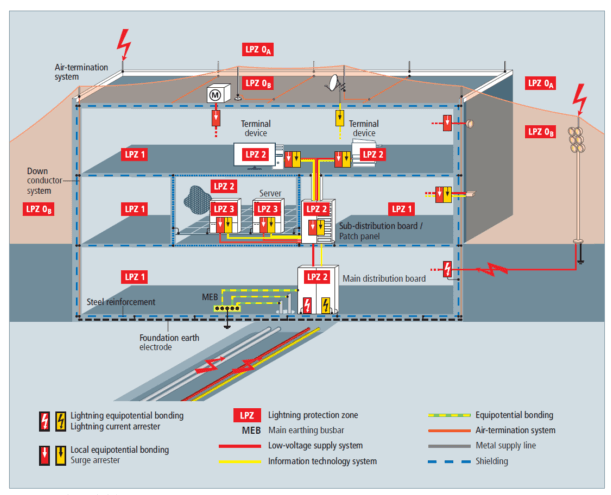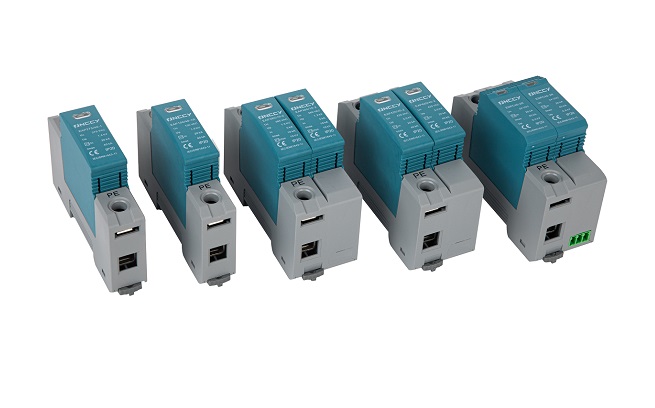A surge protector is a high-performance circuit protector , when subjected to transient high voltages and high-energy pulses, swiftly (in 10^-9 seconds) transitions from a high impedance state to a low one. This effectively mitigates the impact of high-voltage transient interference pulses to a predetermined voltage, thereby safeguarding devices and sensitive components from damage and preventing circuit disruptions.

There are three tiers of surge protection:
The first tier is capable of discharging the colossal energy conveyed by a direct lightning strike or when the power transmission line suffers a direct strike. For this level of protection, a three-phase voltage switch type power lightning arrester is required, with a lightning current capacity of no less than 60kA. This is generally used for total power distribution.
The second tier further limits the residual surge voltage passing through the first-tier lightning arrester to 1500-2000V, implementing an equipotential connection between LPZ1 and LPZ2. The power lightning arrester serving as the second-tier protection should be a voltage-limiting type, with a lightning current capacity of no less than 20kA. This is typically used for power output from distribution cabinets.
The third tier is the final means of protection, reducing the residual surge voltage to less than 1000V. The power lightning arrester at this level should be a series-type voltage-limiting arrester, with a lightning current capacity of no less than 10kA. This is generally used for terminal power distribution equipment.
Different distribution systems should select the appropriate surge protectors, which can be divided into TN (TN-S, N-C, TN-C-S), IT, and TT.

The first-tier protection aims to prevent surge voltage from directly conducting from the LPZ0 zone to the LPZ1 zone, limiting the surge voltage from tens of thousands to hundreds of thousands of volts to 2500-3000V. The power lightning arrester installed on the low-voltage side of the household power transformer should be a three-phase voltage switch type power lightning arrester for this level of protection, with a lightning current capacity of no less than 60kA.
The second-tier protection further limits the residual surge voltage value passing through the first-tier lightning arrester to 1500-2000V, implementing an equipotential connection between LPZ1 and LPZ2. The power lightning arrester serving as the second-tier protection should be a voltage-limiting type, with a lightning current capacity of no less than 20kA.
The third-tier protection aims to ultimately protect the equipment, reducing the residual surge voltage to less than 1000V. The power lightning arrester at this level should be a series-type voltage-limiting arrester, with a lightning current capacity of no less than 10kA.
Depending on the withstand voltage level of the protected equipment: If two tiers of lightning protection can limit the voltage to below the withstand level of the equipment, only two tiers of protection are needed. If the equipment's withstand level is low, four or even more tiers of protection may be necessary. The lightning current capacity of the fourth-tier protection should be no less than 5kA.
